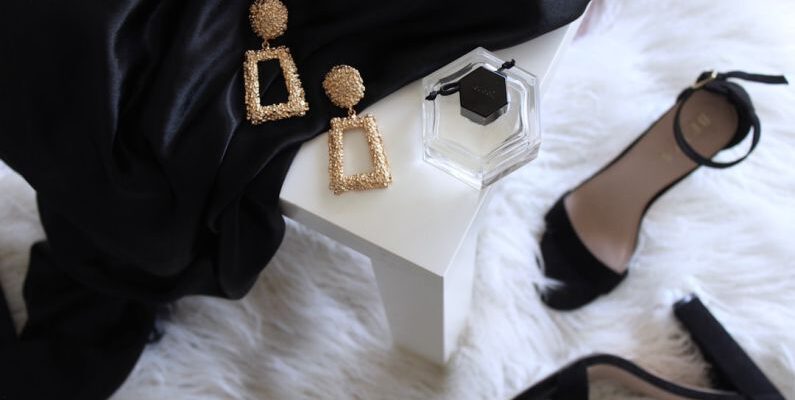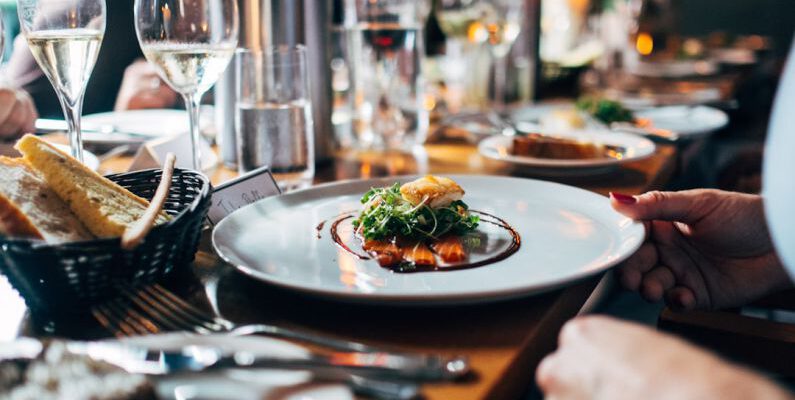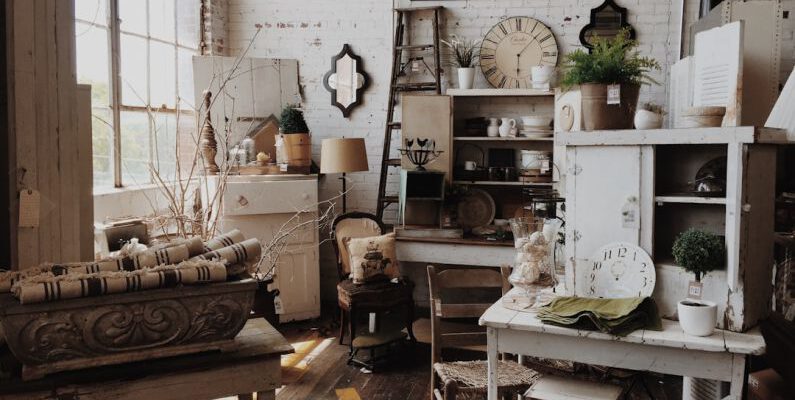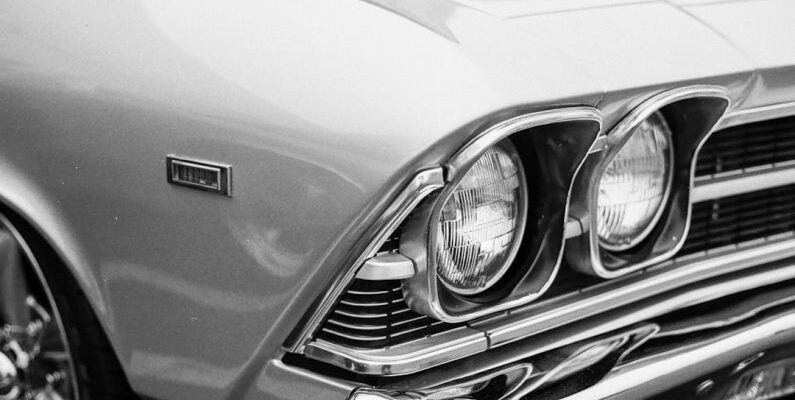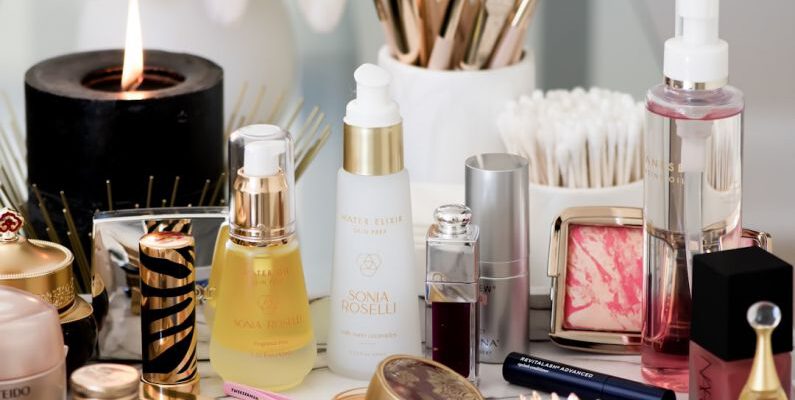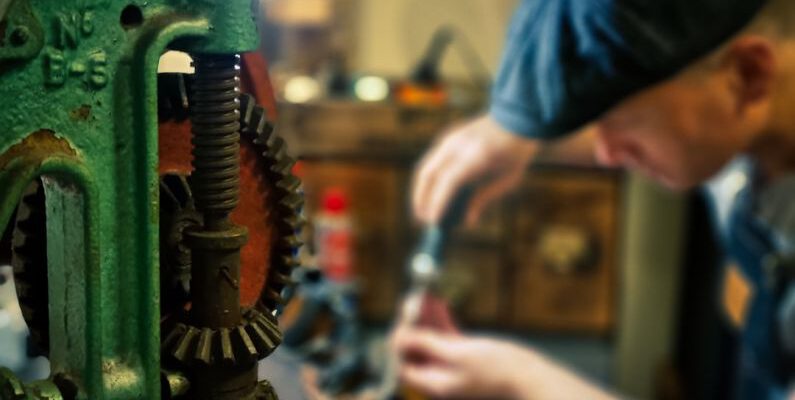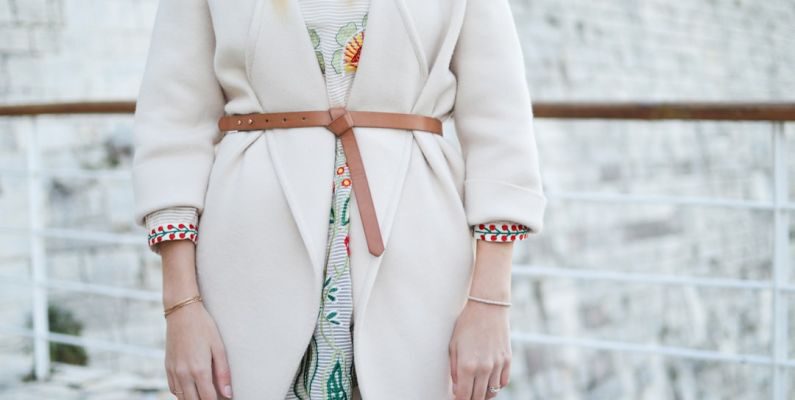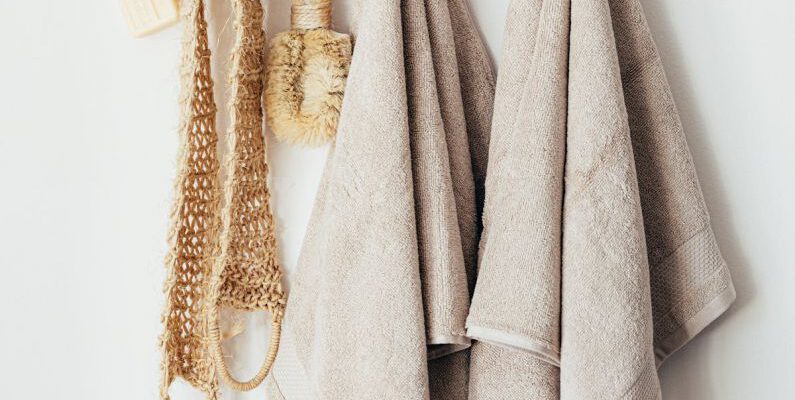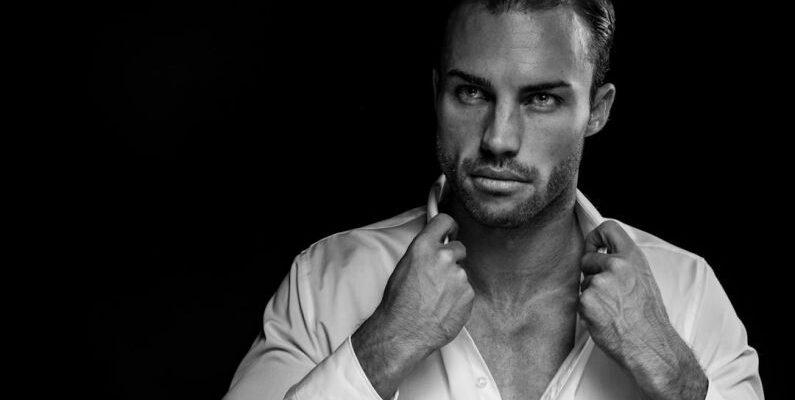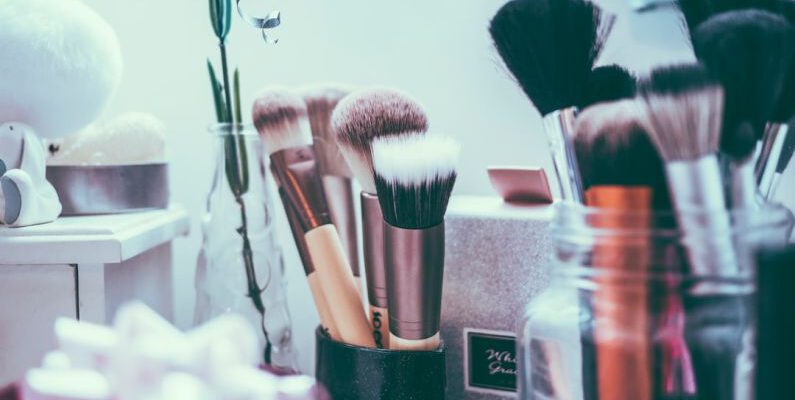Luxury and sustainability are two concepts that have historically been seen as contradictory. The idea of indulging in high-end, expensive items seems to clash with the principles of eco-consciousness and ethical consumption. However, as the world becomes more aware of the environmental and social impact of our purchasing decisions, the question arises: can sustainable shopping include luxury items?
Author: 10thchoice
In a world filled with endless options for luxury items, it can be challenging to determine which ones are truly worth the hefty price tags. Whether you are in the market for designer clothing, high-end accessories, or luxury experiences, making an informed decision is crucial to ensure that you are getting the most value for your money. Here are some key factors to consider when deciding which luxury items are worth the price.
Understanding Your Personal Values
Before splurging on a luxury item, take a moment to reflect on your personal values and priorities. What matters most to you? Are you someone who values quality craftsmanship, innovative design, or exclusivity? Understanding your own preferences and values will help you determine which luxury items align best with your lifestyle and aspirations.Consider the Long-Term Value
When evaluating the worth of a luxury item, it is essential to consider its long-term value. Will the item retain its value over time, or is it likely to depreciate quickly? Quality, timeless pieces from reputable brands are more likely to hold their value and even appreciate in some cases. On the other hand, trendy or seasonal items may lose their appeal and value within a short period.Research the Brand and Reputation
Before making a significant investment in a luxury item, research the brand and its reputation within the industry. Established luxury brands with a long history of excellence and craftsmanship are more likely to deliver on their promises of quality and durability. Look for reviews, testimonials, and expert opinions to gauge the brand's reputation and track record.Evaluate the Quality and Craftsmanship
One of the key indicators of a luxury item's worth is the quality of its craftsmanship. Examine the materials, construction, and attention to detail to determine whether the item meets your standards for excellence. Luxury items are often handcrafted using the finest materials and techniques, resulting in superior quality and longevity.Consider the Cost-Per-Wear
When evaluating the worth of a luxury item, consider its cost-per-wear ratio. Divide the total cost of the item by the number of times you expect to wear or use it to determine its value in relation to its price. While some luxury items may have a high upfront cost, they can be considered worth the price if they bring you joy and satisfaction every time you use them.Balance Between Price and Value
While price is a significant factor when determining the worth of a luxury item, it is essential to consider the overall value that the item provides. A high price tag does not always guarantee quality or satisfaction, so it is crucial to strike a balance between price and value. Consider factors such as design, functionality, and emotional appeal when assessing the worth of a luxury item.Invest in Timeless Pieces
When deciding which luxury items are worth the price, focus on investing in timeless pieces that will stand the test of time. Classic designs, neutral colors, and versatile styles are more likely to remain relevant and stylish for years to come, making them a smart investment in the long run. Avoid trendy or statement pieces that may quickly go out of style.Seek Emotional Connection and Enjoyment
Ultimately, the worth of a luxury item goes beyond its price tag and material value. Seek items that resonate with you on a personal level and bring you joy and satisfaction. Whether it's a designer handbag, a piece of fine jewelry, or a luxury vacation, choose items that evoke positive emotions and enhance your overall well-being. In conclusion, deciding which luxury items are worth the price requires careful consideration of factors such as personal values, long-term value, brand reputation, quality craftsmanship, cost-per-wear, and emotional connection. By taking the time to evaluate these key aspects, you can make informed decisions that align with your preferences and lifestyle. Remember to focus on investing in timeless pieces that bring you joy and satisfaction, ensuring that your luxury purchases are truly worth the price.
Gourmet food has long been synonymous with luxury and indulgence, often reserved for special occasions or as a treat for those looking to experience the finer things in life. But what exactly sets gourmet food apart from everyday fare, and why is it considered a luxury by many? In this article, we delve into the world of gourmet cuisine to explore the factors that contribute to its esteemed status.
The Art of Culinary Craftsmanship
At the heart of gourmet food lies the art of culinary craftsmanship. Unlike mass-produced dishes, gourmet food is meticulously prepared by skilled chefs who pay careful attention to every detail of the cooking process. From selecting the freshest ingredients to perfecting cooking techniques, gourmet chefs take pride in creating dishes that are not only delicious but also visually stunning. Each dish is thoughtfully curated to deliver a multisensory experience that tantalizes the taste buds and delights the senses. The use of high-quality ingredients is a hallmark of gourmet cuisine. Chefs source the finest seasonal produce, premium meats, and exotic spices to elevate the flavors of their creations. These top-tier ingredients are often imported from around the world, adding a touch of exclusivity to gourmet dishes. By using the best of the best, gourmet chefs ensure that each bite is an unforgettable experience that showcases the richness and complexity of flavors.Innovative and Unique Flavor Profiles
Gourmet food is celebrated for its innovative and unique flavor profiles that push the boundaries of traditional culinary norms. Chefs experiment with unconventional ingredients and flavor combinations to create dishes that are unlike anything found in everyday cooking. Whether it's a fusion of global cuisines or a modern twist on classic recipes, gourmet food offers a culinary journey that surprises and delights even the most discerning palates. The attention to detail in gourmet food extends beyond just the taste of the dishes. Presentation plays a vital role in creating a luxurious dining experience. Gourmet chefs meticulously plate their creations, using artistic techniques to showcase the colors, textures, and shapes of each component. The visual appeal of gourmet dishes adds an element of sophistication and elegance to the dining experience, making every meal feel like a work of art.Exclusivity and Prestige
Another reason why gourmet food is considered a luxury is its exclusivity and prestige. Gourmet restaurants often have limited seating and require reservations well in advance, adding an element of exclusivity to the dining experience. The intimate settings and personalized service at gourmet establishments create a sense of exclusivity that elevates the overall dining experience. Furthermore, the price point of gourmet food contributes to its luxury status. Gourmet ingredients and meticulous preparation come at a cost, making gourmet dishes significantly more expensive than their everyday counterparts. This premium price tag adds a sense of exclusivity and prestige to gourmet dining, attracting those who are willing to splurge on a luxurious culinary experience.The Social Aspect of Gourmet Dining
Gourmet food is not just about the dishes themselves but also about the social aspect of dining. Sharing a gourmet meal with loved ones or colleagues is a special experience that fosters connections and creates lasting memories. Gourmet dining is often associated with celebrations, special occasions, and gatherings, making it a communal experience that brings people together in a shared appreciation for good food and company. In conclusion, gourmet food is considered a luxury for a multitude of reasons, including the art of culinary craftsmanship, innovative flavor profiles, exclusivity and prestige, and the social aspect of dining. The meticulous attention to detail, use of high-quality ingredients, and emphasis on creating a multisensory experience all contribute to the allure of gourmet cuisine. Whether indulging in a decadent tasting menu or savoring a gourmet dish at a Michelin-starred restaurant, the luxury of gourmet food lies in its ability to elevate the everyday dining experience into a celebration of culinary artistry.
In Home Decor
In today's ever-evolving world of interior design trends, it seems that what goes around comes back around, especially when it comes to vintage decor elements. From mid-century modern furniture to retro color palettes, the charm of vintage pieces is making a significant comeback in contemporary design schemes. But what exactly is fueling this resurgence of nostalgia and how are these elements finding their way back into modern homes?
Nostalgia in Design
The rise of vintage decor elements can be attributed to a collective sense of nostalgia that has swept across the design world. In a time where everything seems to move at a rapid pace, there is a yearning for the simplicity and authenticity of the past. Vintage pieces evoke memories of a bygone era, bringing a sense of comfort and familiarity into our living spaces. Whether it's a retro-inspired armchair or a collection of antique knick-knacks, these elements serve as a link to the past, allowing us to create spaces that feel both timeless and personal.Embracing Sustainability
Another driving force behind the resurgence of vintage decor elements is the growing emphasis on sustainability and eco-conscious design practices. In a society that is becoming increasingly aware of the environmental impact of mass production and consumerism, there is a renewed appreciation for the quality and craftsmanship of vintage pieces. By incorporating vintage items into our homes, we not only reduce our carbon footprint but also give new life to objects that would otherwise end up in landfills. Vintage decor allows us to embrace a more sustainable approach to design, where reuse and repurposing take center stage.Mixing Old with New
One of the key reasons vintage decor elements are making a comeback is the trend of mixing old with new. Designers and homeowners alike are embracing the concept of eclecticism, blending modern aesthetics with vintage charm to create spaces that are unique and full of character. By juxtaposing sleek, contemporary furniture with quirky vintage finds, we can achieve a harmonious balance between the past and the present. This blending of styles adds depth and visual interest to interiors, creating a dynamic and personalized look that transcends cookie-cutter design trends.Adding Personality and Character
Vintage decor elements bring a sense of personality and character to a space that is often lacking in mass-produced, generic furnishings. Whether it's a weathered leather sofa that tells a story of years gone by or a retro lamp that adds a pop of color and whimsy, vintage pieces inject a sense of individuality into our homes. By incorporating these unique finds, we can create spaces that reflect our personal tastes and interests, making a bold design statement that sets our homes apart from the rest.The Timelessness of Vintage
One of the most compelling reasons for the resurgence of vintage decor elements is their inherent timelessness. Unlike trendy pieces that quickly fall out of favor, vintage items have stood the test of time and continue to exude a sense of enduring style and elegance. Whether it's a classic mid-century modern chair or a vintage Persian rug, these pieces possess a quality that transcends fleeting trends, ensuring that they remain relevant and desirable for years to come. By investing in vintage decor, we can create spaces that age gracefully, evolving with us as our tastes and preferences change.Embracing Imperfection
Vintage decor elements celebrate imperfection in a way that modern design often overlooks. From the patina of aged wood to the wear and tear of a vintage mirror, these imperfections add depth and character to a space, giving it a lived-in and inviting feel. By embracing the flaws and quirks of vintage pieces, we can create interiors that are warm, authentic, and full of stories waiting to be told. In conclusion, the resurgence of vintage decor elements can be attributed to a combination of nostalgia, sustainability, eclecticism, and the timeless appeal of these unique pieces. By incorporating vintage finds into our homes, we can create spaces that are not only visually stunning but also meaningful and reflective of our personal style. Whether it's a single statement piece or a curated collection of vintage treasures, these elements have the power to transform our living spaces into havens of warmth, personality, and charm. So, why not embrace the allure of vintage decor and infuse your home with a touch of timeless elegance and character?
Taking care of vintage clothing requires a delicate touch and special attention to detail. Whether you have inherited a beautiful piece from a family member or found a unique gem at a thrift store, proper cleaning and maintenance are essential to preserve its quality and ensure its longevity. In this guide, we will explore the best practices for cleaning and caring for your beloved vintage garments.
**Understanding the Fabric**
The first step in caring for vintage clothes is to understand the fabric. Different fabrics require different cleaning methods, and it is crucial to identify the material before attempting to clean the garment. Some vintage fabrics, such as silk and wool, are delicate and may require professional cleaning to avoid damage. On the other hand, sturdy fabrics like cotton or polyester can often be hand-washed at home with mild detergent.
**Spot Cleaning**
Spot cleaning is a gentle and effective way to remove small stains from vintage clothing without subjecting the entire garment to a full wash. To spot clean a vintage piece, start by testing a small, inconspicuous area with a mild detergent to ensure that it does not cause any damage. Use a clean cloth or cotton swab to dab the stained area gently, working from the outside in to prevent the stain from spreading. Be patient and avoid rubbing the fabric vigorously, as this can cause the stain to set further.
**Hand Washing**
For vintage garments that can be hand-washed, follow these steps to ensure a thorough yet gentle clean:
1. Fill a clean basin or sink with lukewarm water and a small amount of mild detergent.
2. Turn the garment inside out to protect any delicate details or embellishments.
3. Gently submerge the garment in the soapy water, swishing it around to loosen any dirt or grime.
4. Allow the garment to soak for a few minutes, then rinse it thoroughly with clean water until all the soap is removed.
5. Gently press out excess water without wringing or twisting the fabric, then lay the garment flat on a clean towel to dry.
**Dry Cleaning**
Some vintage fabrics, such as silk or wool, may require professional dry cleaning to avoid damage. If you are unsure about the best way to clean a particular garment, err on the side of caution and take it to a reputable dry cleaner with experience handling delicate fabrics. Be sure to point out any stains or areas of concern to the cleaner so they can give the garment the special attention it needs.
**Storage**
Proper storage is key to preserving the quality of vintage clothing for years to come. Here are some tips for storing your beloved pieces:
- Avoid hanging heavy garments on flimsy hangers, as this can cause stretching or distortion of the fabric.
- Use padded hangers for delicate items like silk blouses or dresses to prevent snagging.
- Store garments in a cool, dry place away from direct sunlight to prevent fading and discoloration.
- Consider using garment bags or acid-free tissue paper to protect vintage pieces from dust and moisture.
**In Summary**
Caring for vintage clothing requires a combination of gentle cleaning techniques and proper storage practices. By understanding the fabric, spot cleaning stains, hand washing when appropriate, and seeking professional dry cleaning for delicate items, you can ensure that your vintage garments remain in pristine condition for years to come. Remember to store your pieces carefully to protect them from damage and enjoy wearing your unique and timeless treasures for many more years.
In the world of beauty products, the allure of luxury items is undeniable. From high-end skincare to luxurious makeup, these products often come with a hefty price tag. Many may wonder if splurging on luxury beauty products is truly worth it. After all, there are countless affordable alternatives available in the market. However, there are several reasons why investing in luxury beauty products can be a worthwhile decision.
The Promise of High-Quality Ingredients
Luxury beauty products often boast high-quality ingredients that are carefully selected for their efficacy. These products are formulated with cutting-edge technology and premium ingredients that are designed to deliver visible results. From potent antioxidants to rare botanical extracts, luxury beauty products are crafted with a focus on efficacy and performance. The use of top-tier ingredients can lead to better outcomes for your skin and hair, making the splurge worthwhile in the long run.Luxurious Packaging and Presentation
One of the hallmarks of luxury beauty products is their exquisite packaging and presentation. From opulent glass bottles to sleek, minimalist designs, luxury beauty items are a treat for the senses. The attention to detail in the packaging not only adds to the overall aesthetic appeal but also enhances the user experience. Every aspect of luxury beauty products, from the scent to the texture, is carefully curated to provide a sense of indulgence and luxury.The Experience of Self-Care and Pampering
Using luxury beauty products can elevate your daily beauty routine into a luxurious self-care ritual. The act of pampering yourself with high-end skincare or makeup can be a form of self-love and self-care. The sensory experience of applying a rich face cream or a decadent lipstick can make you feel like you are treating yourself to something special. Investing in luxury beauty products is not just about the end result but also about the experience of indulging in a moment of luxury and relaxation.Long-Term Benefits for Your Skin and Hair
While luxury beauty products may come with a higher price tag, they often offer long-term benefits for your skin and hair. The high-quality ingredients and advanced formulations in luxury products can help improve the overall health and appearance of your skin and hair over time. Investing in products that are tailored to your specific concerns and skin type can lead to noticeable improvements in texture, tone, and overall radiance. In the long run, the investment in luxury beauty products can pay off with healthier, more vibrant skin and hair.Supporting Innovation and Sustainability
Many luxury beauty brands place a strong emphasis on innovation and sustainability in their product development processes. These brands invest in research and development to create products that are not only effective but also environmentally friendly and socially responsible. By purchasing luxury beauty products, you are supporting brands that prioritize sustainability, ethical sourcing, and cruelty-free practices. This conscious approach to beauty can make your splurge on luxury products feel even more worthwhile, knowing that you are contributing to positive change in the industry. In conclusion, the decision to splurge on luxury beauty products is a personal one that depends on your individual preferences and values. While affordable alternatives can certainly be effective, luxury beauty products offer a unique combination of high-quality ingredients, luxurious packaging, and a sensorial experience that can elevate your beauty routine to a whole new level. Investing in luxury beauty products is not just about the price tag but also about the overall experience and benefits that these products can provide. Whether you are looking for visible results, a moment of self-care, or a way to support sustainable practices, luxury beauty products can be worth the splurge for those who value quality, efficacy, and indulgence in their beauty routine.
In DIY Hacks
Upcycling Old Clothes into New Fashion
Do you have a pile of old clothes sitting in your closet, waiting to be tossed out? Before you consider discarding them, why not give those garments a new lease on life through upcycling? Upcycling is the process of transforming old, worn-out clothes into trendy, unique pieces that align with current fashion trends. Not only does upcycling old clothes breathe new life into your wardrobe, but it also promotes sustainability by reducing textile waste. So, how can you upcycle old clothes into new fashion? Let's explore some creative ideas to revamp your wardrobe while being environmentally conscious.Revamp with DIY Distressing Techniques
One of the simplest ways to upcycle old clothes is by using DIY distressing techniques to give them a trendy, lived-in look. You can easily distress a pair of jeans by strategically cutting, fraying, or sanding the fabric to create a worn-out appearance. For a more personalized touch, consider adding patches, studs, or embroidery to your distressed jeans. This simple yet effective technique can transform a plain pair of denim into a fashion statement that reflects your unique style.Transform Shirts into Crop Tops
If you have a collection of old t-shirts that you rarely wear, consider transforming them into stylish crop tops. Crop tops are a versatile wardrobe staple that can be dressed up or down depending on the occasion. To upcycle a t-shirt into a crop top, simply cut off the bottom hem to your desired length. You can get creative with the neckline and sleeves by cutting, knotting, or adding embellishments for a customized look. This quick and easy upcycling project is a great way to breathe new life into old t-shirts and stay on-trend.Create Patchwork Masterpieces
Patchwork is a timeless trend that adds a quirky, bohemian flair to any outfit. Instead of discarding old clothes with minor stains or tears, consider repurposing them into a patchwork masterpiece. You can mix and match different fabrics, colors, and textures to create a unique patchwork design on a jacket, skirt, or bag. This eco-friendly upcycling technique not only extends the lifespan of your old clothes but also allows you to showcase your creativity and individuality through one-of-a-kind fashion pieces.Embellish with Beading and Sequins
Elevate your old clothes to new fashion heights by embellishing them with beads, sequins, or rhinestones. Adding intricate beading or sequin detailing to a plain blouse, dress, or pair of shorts can instantly transform them into glamorous statement pieces. Whether you opt for a subtle touch of sparkle or full-on embellishments, this upcycling technique allows you to breathe new life into old garments and turn them into eye-catching fashion creations that are sure to turn heads.Repurpose Denim into Accessories
Denim is a durable and versatile fabric that can be repurposed into a wide range of accessories, from bags and hats to jewelry and patches. Instead of letting old denim jeans or jackets gather dust in your closet, consider turning them into trendy accessories that complement your style. You can cut out pockets from old jeans to create unique patchwork bags, or repurpose denim scraps into statement earrings or chokers. By upcycling denim into accessories, you not only reduce textile waste but also add a touch of denim-inspired flair to your wardrobe.Conclusion: Sustainable Style Through Upcycling
Upcycling old clothes into new fashion is a sustainable and creative way to refresh your wardrobe while minimizing textile waste. By embracing DIY distressing techniques, transforming shirts into crop tops, creating patchwork masterpieces, embellishing with beads and sequins, and repurposing denim into accessories, you can breathe new life into old garments and showcase your unique style. So, the next time you're tempted to throw out old clothes, consider upcycling them instead to create fashionable, eco-friendly pieces that reflect your individuality and commitment to sustainability.
**How to Stay Fashionable on a Budget?**
In today's fast-paced world, keeping up with the latest fashion trends can sometimes feel like an expensive endeavor. However, looking stylish and on-trend doesn't have to break the bank. With a little creativity and savvy shopping skills, you can stay fashionable on a budget without compromising your personal style.
**Shop Off-Season**
One of the best ways to save money on clothing is to shop off-season. Retailers often discount items at the end of each season to make room for new inventory. This is a great opportunity to score some amazing deals on pieces that you can wear in the upcoming months. While it may require a bit of planning ahead, shopping off-season can save you a substantial amount of money in the long run.
**Thrift Shopping**
Thrift shopping has become increasingly popular in recent years, and for good reason. Thrift stores are treasure troves of unique and affordable clothing items that you won't find anywhere else. From vintage pieces to designer labels, you never know what hidden gems you might uncover while thrift shopping. Plus, shopping secondhand is a sustainable way to update your wardrobe without contributing to fast fashion waste.
**DIY and Upcycling**
Get creative and give your old clothes a new lease on life with some do-it-yourself projects. Whether it's adding patches to a pair of jeans, turning a t-shirt into a crop top, or embellishing a jacket with studs, upcycling your clothing can be a fun and budget-friendly way to stay fashionable. Not only will you save money by not having to buy new items, but you'll also have one-of-a-kind pieces that showcase your personal style.
**Sales and Clearance Sections**
Keep an eye out for sales and clearance sections both in-store and online. Many retailers offer deep discounts on their inventory, especially at the end of each season. By being patient and strategic with your shopping, you can score great deals on high-quality clothing items that will elevate your wardrobe without breaking the bank. Sign up for newsletters or follow your favorite brands on social media to stay informed about upcoming sales and promotions.
**Mix and Match**
Maximize your wardrobe by mixing and matching pieces to create new outfits. By experimenting with different combinations, you can create fresh and stylish looks without having to buy new clothes. Invest in versatile basics that can be easily paired with other items in your closet to create a variety of outfits. Don't be afraid to step out of your comfort zone and try new combinations – you might be surprised at the stylish outfits you can come up with using what you already own.
**Conclusion:**
Staying fashionable on a budget is all about being smart and creative with your shopping choices. With a little effort and a lot of imagination, you can build a stylish wardrobe that reflects your personal taste without spending a fortune. Remember, fashion is not about how much you spend, but how you express yourself through your clothing choices. So go ahead, embrace your inner fashionista and show the world that style doesn't have to come with a hefty price tag.
In Tech Gadgets
Virtual Reality: Shaping the Future of Entertainment
In a world where technology continues to advance at a rapid pace, virtual reality (VR) has emerged as a revolutionary force in the realm of entertainment. With its ability to transport users to immersive digital environments, VR offers a level of engagement and interactivity that traditional forms of media simply cannot match. As the technology behind VR continues to evolve and improve, it is becoming increasingly clear that virtual reality is poised to become the future of entertainment.Immersive Experiences
One of the key reasons why virtual reality is the future of entertainment is its unparalleled ability to create immersive experiences for users. Unlike traditional forms of media, such as movies or video games, which are viewed on a screen, VR allows users to step inside a virtual world and interact with their surroundings in a way that feels incredibly real. Whether exploring a far-off alien planet, solving puzzles in a mysterious castle, or participating in a thrilling adventure, the level of immersion provided by VR is unmatched.Interactivity and Engagement
Another factor that sets virtual reality apart as the future of entertainment is its emphasis on interactivity and engagement. In a VR environment, users are not passive observers but active participants in the experience. This level of interactivity allows for a deeper connection with the content and a greater sense of agency in shaping the outcome of the narrative. Whether through making choices that impact the story, solving puzzles to progress, or engaging in multiplayer experiences with friends, VR offers a level of engagement that keeps users coming back for more.Diverse Applications
Virtual reality is also shaping the future of entertainment through its diverse range of applications across various industries. While VR is commonly associated with gaming, its potential goes far beyond just entertainment. From virtual tours of real-world locations to immersive training simulations for professionals, VR is being utilized in fields such as education, healthcare, architecture, and more. The versatility of VR technology opens up a world of possibilities for creating engaging and impactful experiences that cater to a wide range of interests and needs.Social Connection
One of the most exciting aspects of virtual reality as the future of entertainment is its ability to foster social connection in a digital space. With the rise of social VR platforms and multiplayer experiences, users can interact with others in virtual environments in ways that mimic real-life interactions. Whether attending virtual events, collaborating on projects, or simply hanging out with friends in a virtual space, VR provides a sense of presence and connection that transcends physical distance. As social interactions continue to move online, virtual reality offers a unique opportunity to bridge the gap and bring people together in new and exciting ways.Accessibility and Inclusivity
Virtual reality is also making strides towards a more accessible and inclusive form of entertainment. As VR technology becomes more affordable and user-friendly, barriers to entry are being lowered, allowing a wider audience to experience the magic of virtual reality. Additionally, VR has the potential to create inclusive spaces where individuals of all abilities can participate in experiences that may not be possible in the physical world. By prioritizing accessibility and inclusivity, virtual reality is paving the way for a more diverse and equitable future of entertainment.In Conclusion: Embracing the Virtual Future
As virtual reality continues to push the boundaries of what is possible in entertainment, it is clear that the future of the industry lies in the immersive, interactive, and diverse experiences that VR has to offer. From creating immersive worlds to fostering social connections and promoting inclusivity, virtual reality is transforming the way we engage with entertainment. As technology continues to evolve and VR becomes more mainstream, the possibilities for the future of entertainment are truly limitless. Embracing the virtual future means embracing a new era of entertainment that is as exciting as it is innovative.Creating an Eco-Friendly Haven: How to Shop for Sustainable Home Decor
As sustainability becomes an increasingly important consideration in our lives, many individuals are looking for ways to incorporate eco-friendly practices into their everyday routines. One area where this shift can have a significant impact is in the realm of home decor. By choosing sustainable and environmentally friendly options when decorating our living spaces, we can not only reduce our carbon footprint but also create a healthier and more harmonious living environment. If you're looking to shop for eco-friendly home decor but aren't sure where to start, here are some tips to help guide you on your journey towards creating a sustainable sanctuary.Choose Sustainable Materials
When shopping for eco-friendly home decor, one of the most important factors to consider is the materials used in the products you're purchasing. Opting for items made from sustainable materials such as bamboo, reclaimed wood, organic cotton, or recycled glass can significantly reduce the environmental impact of your decor choices. These materials are not only better for the planet but also often of higher quality, ensuring that your decor will stand the test of time.Embrace Minimalism
Incorporating a minimalist approach to home decor can also be a great way to shop sustainably. By focusing on quality over quantity and choosing items that serve a purpose while also being aesthetically pleasing, you can create a stylish and eco-friendly living space. Embracing minimalism can also help reduce waste and clutter in your home, leading to a more serene and peaceful environment.Support Local Artisans
Another way to shop for eco-friendly home decor is to support local artisans and small businesses. By purchasing handmade items from local craftsmen, you can ensure that your decor is not only unique and beautiful but also ethically produced. Choosing to buy from local artisans also helps support the local economy and reduces the carbon footprint associated with shipping items long distances.Upcycle and Repurpose
One of the most sustainable approaches to home decor is to upcycle and repurpose items that might otherwise end up in the landfill. Get creative and look for ways to give new life to old furniture, textiles, or other household items. Whether it's refinishing a vintage dresser, turning old jars into vases, or repurposing fabric scraps into throw pillows, upcycling can add a personal touch to your decor while also reducing waste.Invest in Energy-Efficient Lighting
When it comes to eco-friendly home decor, lighting plays a crucial role. Opting for energy-efficient LED bulbs can help reduce your energy consumption and lower your electricity bills. Additionally, choosing decorative lighting fixtures made from sustainable materials can add a touch of style to your space while also being environmentally friendly.Choose Non-Toxic Paints and Finishes
When updating your home decor, be mindful of the paints and finishes you use. Many conventional paints contain harmful chemicals that can off-gas volatile organic compounds (VOCs) into your home, contributing to indoor air pollution. Instead, opt for non-toxic paints and finishes that are low in VOCs and environmentally friendly. These eco-friendly options are better for both your health and the planet.Create a Sustainable Sanctuary
By following these tips and making conscious choices when shopping for home decor, you can create a sustainable sanctuary that reflects your values and helps protect the environment. From choosing sustainable materials and supporting local artisans to upcycling and investing in energy-efficient lighting, there are many ways to shop for eco-friendly home decor. With a little creativity and a commitment to sustainability, you can transform your living space into a beautiful and environmentally conscious haven.
In recent years, there has been a notable shift in the beauty industry with the emergence of a significant trend - the rise of men's beauty products. Traditionally, grooming was seen as a predominantly female-oriented domain, but with changing societal norms and evolving perceptions of masculinity, men are now openly embracing skincare, haircare, and grooming products. The question that arises is: Can men's beauty products revolutionize grooming habits? Let's delve into this evolving phenomenon and explore the potential impact it may have on men's grooming routines.
**The Changing Face of Grooming**
Gone are the days when men's grooming routines were limited to a quick shave and splash of aftershave. Today, men are investing more time and effort into taking care of their skin, hair, and overall appearance. The rise of social media influencers, male celebrities openly endorsing beauty products, and the increasing awareness around self-care have all played a role in reshaping the grooming landscape for men.
**Breaking Stereotypes**
One of the key driving forces behind the surge in men's beauty products is the breaking down of traditional gender stereotypes. The notion that skincare and grooming are exclusively feminine activities is being challenged, with more men realizing that taking care of their appearance is not a sign of weakness but rather a form of self-care and self-respect. As a result, men are exploring a wide range of beauty products that cater to their specific needs and preferences.
**Tailored Solutions for Men**
The beauty industry has responded to this shift in demand by developing a plethora of products specifically designed for men. From cleansers and moisturizers to serums and masks, men now have access to a diverse range of skincare options that address concerns such as acne, aging, and sensitivity. Haircare products tailored to different hair types and styles have also become increasingly popular among men looking to maintain healthy and stylish hair.
**The Rise of Men's Grooming Brands**
Recognizing the potential of the male grooming market, many beauty brands have expanded their product lines to include offerings specifically targeted towards men. These brands have not only focused on creating effective products but have also paid attention to packaging, marketing, and branding to appeal to the male consumer. This targeted approach has made it easier for men to navigate the world of beauty products and find solutions that suit their needs.
**Shifting Perceptions of Masculinity**
The acceptance and normalization of men's beauty products also signal a broader shift in societal perceptions of masculinity. Men are no longer expected to conform to rigid standards of appearance and behavior but are encouraged to express themselves authentically and embrace their individuality. The use of beauty products is no longer viewed as emasculating but rather as a way to enhance one's confidence and overall well-being.
**The Impact on Grooming Habits**
As men's beauty products continue to gain popularity and acceptance, it is evident that they have the potential to revolutionize grooming habits. Men are now more informed about skincare and grooming practices, leading to a more conscious approach to self-care. By incorporating products that cater to their specific needs, men can achieve healthier skin, hair, and overall grooming routines.
**Embracing Self-Care**
The rise of men's beauty products is not just about looking good but also about feeling good. Taking the time to pamper oneself with skincare routines or haircare rituals can be a form of self-care that promotes mental well-being and confidence. Men are recognizing the importance of investing in themselves and are reaping the benefits of a more holistic approach to grooming.
**Empowering Choice**
In conclusion, the increasing availability and acceptance of men's beauty products have the potential to revolutionize grooming habits by empowering men to make choices that align with their personal preferences and needs. By breaking free from outdated stereotypes and embracing self-care, men are rewriting the narrative around masculinity and grooming. As the beauty industry continues to evolve and cater to the diverse needs of male consumers, we can expect to see a positive shift in grooming habits that prioritize self-expression, self-care, and confidence.
In DIY Hacks
In a world where skincare and beauty products are becoming increasingly expensive, many people are turning to do-it-yourself (DIY) beauty products as a cost-effective alternative. The allure of creating your own face masks, scrubs, and hair treatments using natural ingredients is not only appealing but also promises to be gentler on the skin and free from potentially harmful chemicals found in store-bought products. But the question remains: Can DIY beauty products truly save you money in the long run?
